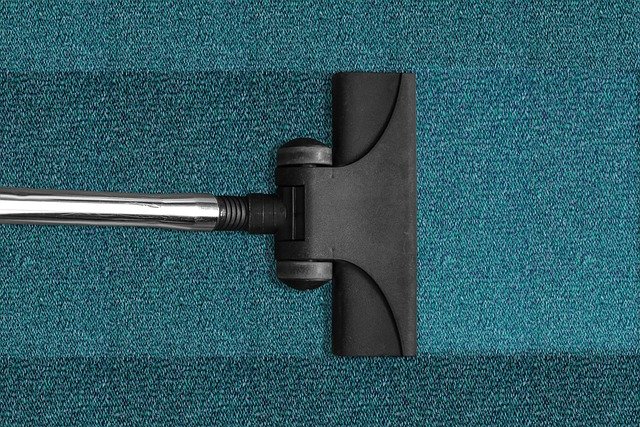Do you own rental properties in the San Diego area? If so, you're likely aware that California is known for having rental laws that are more tenant-friendly than other parts of the country.
As such, it's important to always be conscious of how you're handling every aspect of managing your rental property, in order to avoid time-consuming disputes or legal troubles that can have a cost.
One example of an aspect of managing a rental property that requires great care is the security deposit. There are strict guidelines you should follow as a landlord in San Diego when it comes to collecting, storing, deducting from, and returning security deposits.
When it comes to the security deposit, it's truly important to document all aspects well, use good judgment and reasonable assessment, and follow California's landlord-tenant law to the letter. If you aren't well-versed in the state's landlord-tenant law, it may be a good idea to enlist the help of professionals.
Let's take a look at what you need to know about security deposits as a California landlord.
An Overview of How to Handle Security Deposits in California
The Security Deposit Documentation Process
In California, the security deposit documentation process should begin when the tenant pays their security deposit at the time of move-in, and a move-in inspection is performed.

The details of the property condition should be documented on an inspection form—the details and photos should be captured room-by-room. Then, this form should be saved by landlords until it's time for the tenant to move out and address the deposit.
Both the tenant and the landlord need to be provided with a copy of this document, and should keep it in a safe place for future reference. If a landlord doesn't retain access to the checklist and photos from the move-in inspection, the landlord may not be able to prove what condition the unit was in before the tenant moved in, which will be difficult if they want to deduct from the security deposit of the tenant.
Holding the Security Deposit
In certain states, it's necessary for a security deposit to be held in an interest-bearing account when a landlord has a certain number of properties. In this scenario, it's often necessary to return a tenant's security deposit along with the interest that the security deposit accrued during the time of the lease.

However, in California, this is not the case for the deposit. While a landlord should be sure to store the tenant's security deposit in a safe location and inform the tenant (with written notice) of where their deposit is being stored, it's not necessary for the security deposit to be stored in an interest-bearing account under California law.
Naturally, the security deposit cannot be used for any purpose except those specified in the lease agreement, in accordance with California's landlord-tenant laws. It will cost landlords more to break this law than to wrongfully deduct from the deposit of the tenant.
Pre-Move-Out Inspection
In the final stretch of a California tenant's occupancy in the rental unit, a California landlord has the right to a pre-move inspection, which can be held no sooner than 14 days before their move-out. A written notice will be provided for this.
This is an inspection during which aspects that may be cause for a deduction of full withholding of a tenant's security deposit are pointed out to the tenant. These items are to be listed on an inspection form that's provided to the tenant.
This gives the tenant the opportunity to remedy these issues in the rental property before their tenancy is over, to avoid charges to their California security deposit by the landlord.
Itemizing Deductions and Returning the Deposit
Once tenants have vacated a residential property, a move-out inspection should be conducted by their California landlords, in which details are documented on the same form that was filled out during the move-in inspection.
Photos should be taken to document any changes in the condition of the California unit. An itemized statement is also useful, which will eventually be given to the tenant to show the security deposit deductions.

Any damages beyond normal wear and tear can be deducted from the tenant's security deposit amount. Normal wear and tear is not the tenant's responsibility.
California landlords then have 21 days to complete any necessary repairs or estimates, itemize all the security deposit deductions to be made, and send the documentation and the remaining security deposit funds to the former tenant.
How to Protect Yourself
One of the main reasons why California landlords collect security deposits in the first place is to protect themselves against risk. Screening tenants properly can ward off issues such as unpaid rent, the breaking of the rental agreement, or run-ins with the California law.
No matter how effective a landlord is with their screening process is, or how certain a landlord feels that a given tenant will treat their property with care and respect, both accidents and negligence are always possible, which can necessitate retaining some or all of the security deposit. This deposit is a financial cushion.

That's why it's hugely important for a California landlord to be meticulous in their record-keeping at every stage of the process. The retention of all or part of the deposit depends on it.
When a landlord has detailed notes and extensive photographs to document the state of their property, the landlord can feel assured that the state of the property at both move-in and move-out time is not open to interpretation by a tenant or a court. Security deposit disputes by a tenant are not uncommon, especially in regards to cost.
When unfortunate situations emerge that result in landlords and tenants ending up in a battle in small claims court, it's typically because the landlord has cut corners in their documentation process and failed to communicate their expectations of the tenant's security deposit clearly.
Some unscrupulous landlords will even attempt to make security deposit deductions for unwarranted issues— such as normal wear and tear—that it is not a tenant's responsibility to cover under California law.
For a more comprehensive overview of what kind of deductions are permitted from a California security deposit, read this helpful overview.
Managing Security Deposits: The Bottom Line
As you can surely imagine, the California security deposit process has the potential to be highly contentious. When there is a sum of money on the line, emotions can run high, as tenants may not agree with your assessment of the damage to the property.
As is the case with many aspects of being a landlord, you should make every effort to treat tenants fairly, communicate your expectations clearly, and make a comprehensive record of every action that you take, both to protect yourself legally and to stay organized.
Because it can be stressful to stay on top of security deposit procedures—particularly if you own numerous properties—many landlords choose to enlist the help of an experienced property management company.
With an effective property management team on your side, you can feel assured that each step involved in fair and legal collection, storage, and return of tenants' security deposits is being handled correctly, freeing you to focus on other opportunities.
North County Property Group can help with handling the security deposit and many more aspects of property management like creating a firm lease agreement, tenant screening, rent collection, and more. Contact us today to learn about how we can help!
Disclaimer: Please keep in mind that while this article is a helpful overview of security deposits in California, it doesn't constitute legal advice. For specific legal help, get in touch with a local expert in landlord-tenant law.











